Explore the world of the best arch support specialist, a key player in promoting foot health and overall well-being.
Introduction to Arch Support
Arch support is an essential aspect of foot health that is often overlooked. The arch of the foot is a critical structure, providing both flexibility and support as we walk, run, or stand. It acts like a spring, absorbing the shock and impact from our daily activities. However, when this arch is not properly supported, it can lead to a host of issues, not just in the feet but also in other parts of the body.
Understanding arch pain and its causes is crucial. Arch pain can result from various conditions, such as plantar fasciitis, flat feet, or even overpronation. These conditions can cause discomfort and pain, not just in the foot but also in the legs, knees, hips, and back. The pain is often more pronounced after prolonged periods of standing or walking and might manifest as a burning or throbbing sensation.
The need for good arch support is not limited to those suffering from foot ailments. Even individuals with healthy feet can benefit from proper arch support to prevent potential future problems. It is especially important for people who engage in high-impact activities or those who spend a lot of time on their feet.
This is where the role of an arch support specialist becomes invaluable. These experts specialize in assessing the structure of the foot and determining the type of support needed to alleviate pain, correct imbalances, and provide comfort. With the right arch support, many people find significant relief from foot pain and improved overall foot function.
In conclusion, understanding and addressing the needs of your foot arches is a vital step in maintaining overall foot health and comfort. Whether through specialized footwear, custom orthotics, or exercises designed to strengthen the foot arch, taking care of this crucial part of your feet can have far-reaching benefits for your overall well-being.
The Role of Arch Support Specialists
Arch support specialists play a pivotal role in ensuring the health and comfort of our feet, a part that’s often taken for granted until problems arise. These professionals are trained to understand the complex structure of the foot, particularly the arch, and how it affects not only our feet but our entire body’s alignment and health.
At the core of their role, arch support specialists assess individual foot structures. This involves a thorough examination to understand each person’s unique foot mechanics. They look for irregularities, imbalances, or specific conditions that might contribute to foot discomfort or pain. This assessment is crucial, as it forms the basis for any recommended treatments or support systems.
Once a diagnosis is made, arch support specialists recommend solutions tailored to each individual’s needs. These can range from custom-made orthotics, which are inserts designed to fit into shoes and provide support exactly where it’s needed, to specific footwear recommendations. They also advise on exercises and stretches that can strengthen foot muscles, improve arch health, and reduce pain.
Education is another critical aspect of their role. Arch support specialists not only provide solutions but also educate clients on the importance of foot health. They offer insights into how daily activities, footwear choices, and overall lifestyle can impact foot health. This education empowers individuals to make informed decisions about their foot care, leading to better long-term outcomes.
In some cases, these specialists collaborate with other healthcare professionals, such as podiatrists, physiotherapists, and orthopedic surgeons. This multidisciplinary approach ensures comprehensive care, particularly for those with more complex foot conditions or those who need surgical intervention.
Furthermore, arch support specialists stay abreast of the latest developments in foot health, including new techniques, materials, and technologies. They integrate this knowledge into their practice, ensuring that clients receive the most current and effective care.
In summary, the role of arch support specialists is multifaceted and crucial. They assess, diagnose, and treat foot conditions, focusing specifically on the arch. By providing customized solutions, education, and collaborative care, they play a vital role in maintaining foot health and, by extension, enhancing overall quality of life and mobility.
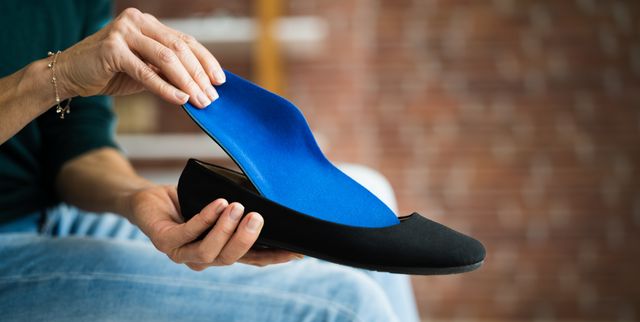
Qualifications and Training
The path to becoming an arch support specialist involves a combination of formal education, specialized training, and hands-on experience. This journey equips these professionals with the knowledge and skills necessary to effectively diagnose, treat, and manage various foot conditions, particularly those related to the arch.
- Formal Education: Typically, a career as an arch support specialist begins with a foundational education in a relevant field. This could be a degree in podiatry, kinesiology, physical therapy, or a related healthcare discipline. These programs provide a broad understanding of human anatomy, physiology, and biomechanics, with a particular focus on the lower extremities.
- Specialized Training in Foot Health: After completing their primary degree, aspiring arch support specialists often undergo additional training specifically focused on foot health. This can include courses or certifications in areas like foot orthotics, gait analysis, and foot and ankle pathology. This specialized training is essential, as it hones their skills in understanding and addressing the unique complexities of foot structure and function.
- Clinical Experience: Hands-on clinical experience is a critical component of their training. This experience is often gained through internships, residencies, or working under the supervision of experienced practitioners. During this time, trainees learn practical skills in assessing foot problems, designing and fitting orthotics, and developing treatment plans.
- Certifications and Licensure: In many regions, practicing as an arch support specialist requires specific certifications or licensure. This often involves passing exams that test their knowledge and skills in foot care. The requirements for certification or licensure can vary depending on the region and the specific scope of practice.
- Continuing Education: The field of foot health is continually evolving, with new research, techniques, and technologies emerging regularly. Therefore, arch support specialists must commit to ongoing learning and professional development. This may involve attending workshops, seminars, and conferences, as well as keeping up with the latest research in foot health.
- Developing a Specialization: Some arch support specialists may choose to further specialize in certain areas, such as sports medicine, pediatrics, or diabetic foot care. This additional specialization often involves further training and experience and allows them to provide more targeted care to specific patient groups.
In conclusion, becoming an arch support specialist requires a blend of formal education, specialized training in foot health, clinical experience, and ongoing professional development. Through this comprehensive training, they develop the expertise necessary to provide high-quality care and support for individuals with various foot-related issues.
Importance of Customized Arch Support
Customized arch support is a cornerstone of effective foot care, addressing a wide range of foot-related issues by catering to the unique structure and needs of each individual’s feet. The importance of this personalized approach cannot be overstated, as it directly impacts comfort, mobility, and overall foot health.
Personalized Fit: Every foot is unique, with its own shape, size, and structural characteristics. Customized arch supports are designed to match these individual features, providing support exactly where it’s needed. This personalized fit ensures maximum comfort and effectiveness, as opposed to one-size-fits-all solutions which might not address specific issues.
Improved Comfort and Pain Relief: Many foot problems, including arch pain, plantar fasciitis, and flat feet, can cause significant discomfort and limit mobility. Customized arch supports help distribute pressure more evenly across the foot, alleviating pain and providing relief. They can transform how individuals walk, stand, and engage in daily activities by significantly reducing foot discomfort.

Enhanced Foot Function: Proper arch support improves the foot’s biomechanics. It supports the natural shape of the arch, promoting a more efficient and natural gait pattern. This can help in reducing fatigue and improving balance and stability, which is particularly important for athletes and individuals with active lifestyles.
Prevention of Further Complications: Customized arch supports not only address current foot issues but also help in preventing future problems. By providing proper support and alignment, they can minimize the risk of developing additional foot conditions, joint problems, or worsening of existing issues.
Better Posture and Alignment: The benefits of customized arch support extend beyond the feet. Proper foot alignment can positively affect the entire skeletal structure, potentially improving posture and alleviating pain in the knees, hips, and lower back. This holistic benefit underscores the interconnectedness of foot health with overall bodily well-being.
Long-Term Foot Health: Consistent use of customized arch supports contributes to long-term foot health. They help in maintaining the structural integrity of the foot, mitigating wear and tear, and supporting the foot’s natural function over time.
Tailored to Specific Needs: Customized arch supports can be tailored not just to the shape of the foot but also to specific conditions and lifestyles. Whether for sports, daily wear, or for specific medical conditions like diabetes, they can be designed to meet diverse requirements.
In conclusion, the importance of customized arch support lies in its ability to provide a tailored solution that addresses individual foot characteristics and needs. This personalized approach results in improved comfort, enhanced foot function, prevention of further complications, and contributes to overall foot and body health. For these reasons, customized arch support is a key element in effective foot care and maintenance.
The Connection Between Arch Support and Overall Health
The importance of arch support extends beyond just foot comfort; it has a significant impact on overall health. The feet are the foundation of the body, and how they are supported affects the alignment and functioning of the entire skeletal system. Understanding this connection can lead to a better appreciation of why proper arch support is essential.
- Posture and Alignment: Good arch support contributes to proper alignment of the feet, which in turn influences the posture of the entire body. When the arches are adequately supported, it promotes a more natural standing and walking posture. This can help in reducing strain on the ankles, knees, hips, and spine, thus preventing a cascade of alignment-related issues.
- Reduced Pain and Discomfort: Lack of proper arch support can lead to overpronation or supination, contributing to various ailments like plantar fasciitis, heel spurs, and knee pain. By providing the right support, these conditions can be alleviated, or their development can be prevented, reducing overall pain and discomfort.
- Enhanced Mobility: With the right arch support, individuals often experience improved mobility. It can make walking, running, and other activities more comfortable and less tiring. This is especially beneficial for athletes or those with physically demanding lifestyles, as it can improve performance and reduce the risk of injury.
- Increased Stability and Balance: Arch support plays a crucial role in maintaining balance and stability. This is particularly important for older adults or those with conditions that affect their balance. Proper support can reduce the risk of falls and injuries, which is essential for maintaining independence and quality of life.
- Prevention of Future Foot Problems: Consistent use of proper arch support can prevent the development of further foot problems. It helps in maintaining the structural integrity of the foot, reducing the likelihood of issues like bunions, hammertoes, or arthritis in the foot joints.
- Impact on Gait: The way we walk, or our gait, is significantly influenced by the support our feet receive. Proper arch support can lead to a more efficient and natural gait, reducing the stress on the body that can result from compensating for foot pain or imbalance.
- Overall Body Health: Foot problems can lead to a sedentary lifestyle due to pain and discomfort, impacting overall health. By ensuring proper arch support, individuals are more likely to stay active and engage in regular exercise, which is vital for overall health and well-being.
In conclusion, the connection between arch support and overall health is profound. Proper arch support not only ensures foot health but also plays a significant role in maintaining posture, reducing pain, enhancing mobility, and contributing to general physical well-being. It’s a fundamental aspect of a holistic approach to health care.
Finding the Best Arch Support Specialist
Locating the best arch support specialist is a crucial step for anyone seeking relief from foot-related issues or looking to improve their overall foot health. A qualified specialist can provide personalized care, expert advice, and effective treatment plans. Here are key considerations to keep in mind when searching for the best arch support specialist:
- Check Qualifications and Credentials: Look for a specialist with the appropriate educational background and certifications. They should have a degree in a relevant field like podiatry, physical therapy, or orthotics, along with any required licensure. Certifications in specific areas of foot care and arch support are also a plus.
- Experience Matters: Consider the length and breadth of the specialist’s experience. Specialists who have been practicing for several years are likely to have encountered a wide range of foot conditions and will have a deeper understanding of various treatment methods.
- Specialization and Areas of Expertise: Some specialists might focus on specific areas, such as sports medicine, pediatrics, or diabetic foot care. Choose a specialist whose expertise aligns with your specific needs and health condition.
- Referrals and Recommendations: Personal recommendations from friends, family, or healthcare providers can be invaluable. Additionally, online reviews and testimonials can provide insights into the specialist’s effectiveness and patient satisfaction.
- Consultation Approach: Look for a specialist who takes a comprehensive and patient-centered approach. They should conduct a thorough assessment, listen to your concerns, and explain treatment options clearly. A good specialist should be willing to answer your questions and discuss your treatment plan in detail.
- Technology and Techniques Used: Enquire about the technology and techniques the specialist uses. The best specialists often employ the latest advancements in foot care and arch support, ensuring more accurate diagnoses and effective treatments.
- Insurance and Cost Considerations: Understand the cost implications and check if the specialist accepts your insurance. Some treatments or custom orthotics may not be covered by insurance, so it’s important to have a clear understanding of the expenses involved.
- Accessibility and Location: Consider the location of the specialist’s practice. Convenience and accessibility can be important, especially if multiple visits are required.
- Patient Education and Resources: The best specialists not only treat but also educate their patients about foot health. They should provide resources and advice on how to maintain foot health and prevent future issues.
- Follow-up and Support: Post-treatment follow-up and support are essential components of effective care. Ensure that the specialist you choose offers adequate follow-up services and is available to address any concerns or complications that may arise.
In conclusion, finding the best arch support specialist involves researching their qualifications, experience, areas of expertise, and approach to patient care. Personal referrals, patient reviews, and an initial consultation can also provide valuable insights. By carefully selecting a specialist, you can ensure that you receive the best possible care for your foot health needs.

Common Arch Support Problems
Arch support problems are widespread and can lead to discomfort and a range of other foot-related issues. Recognizing and understanding these common problems is crucial for effective treatment and prevention. Here are some of the most frequently encountered arch support issues:
- Flat Feet (Fallen Arches): This condition is characterized by the arches of the feet collapsing, leading to the entire sole of the foot coming into complete or near-complete contact with the ground. Flat feet can cause pain and discomfort, especially during long periods of walking or standing. It can also lead to overpronation, which affects how the foot rolls inward when walking.
- Plantar Fasciitis: One of the most common causes of heel pain, plantar fasciitis involves inflammation of the plantar fascia, the thick band of tissue that runs across the bottom of the foot and connects the heel bone to the toes. Improper arch support can strain the plantar fascia, leading to pain and stiffness.
- High Arches: Conversely to flat feet, high arches can also pose problems. This condition often leads to poor shock absorption, resulting in excessive pressure on the ball and heel of the foot. High arches can make finding comfortable footwear challenging and often require specialized arch support.
- Arch Strain and Pain: Strain to the arch can occur due to overuse, lack of proper footwear, or inadequate arch support. This can lead to pain and inflammation in the arch area. Arch pain can be especially pronounced after activities that involve a lot of walking or standing.
- Overpronation and Supination: Overpronation occurs when the foot rolls inward excessively when walking, while supination is when the foot rolls outward. Both conditions can be due to improper arch support, leading to uneven weight distribution and alignment issues, which may affect the knees, hips, and back.
- Bunions and Hammertoes: These conditions can be exacerbated by or even result from improper arch support. Bunions are painful bony bumps that form on the joint at the base of the big toe, while hammertoes are deformities of the second, third, or fourth toes, causing them to bend at the middle joint.
- Heel Spurs: These are growths of bone on the underside of the heel bone, which can occur when the plantar fascia pulls away from the heel. This condition can be related to both flat feet and plantar fasciitis and can cause significant heel pain.
- Metatarsalgia: This condition refers to pain and inflammation in the ball of the foot. It’s often caused by improper foot alignment due to inadequate arch support, leading to increased pressure on the metatarsals.
In conclusion, common arch support problems range from flat feet and plantar fasciitis to high arches and alignment issues like overpronation and supination. Understanding these conditions is essential for seeking appropriate treatment, which may include customized orthotics, exercises, and changes in footwear. Addressing these issues not only alleviates foot discomfort but also helps in maintaining overall foot health.
Innovative Arch Support Technologies
The field of arch support has seen remarkable advancements in technology, offering innovative solutions to common foot problems. These technologies have revolutionized the way arch support is approached, providing more effective, comfortable, and personalized options. Here are some key innovations in arch support technologies:
- 3D Foot Scanning and Printing: One of the most significant advancements is the use of 3D scanning technology to create precise models of an individual’s feet. This technology allows for the creation of custom orthotics that match the exact contours of the foot, providing unparalleled support and comfort. Additionally, 3D printing can be used to manufacture these custom orthotics quickly and efficiently.
- Advanced Materials: The development of new materials has led to lighter, more comfortable, and more durable arch supports. Memory foam, gel, and advanced polymers are now commonly used, providing better cushioning and shock absorption. These materials adapt to the shape of the foot, distributing pressure evenly and reducing strain on the arch.
- Smart Insoles: Technological integration has led to the development of smart insoles. These insoles are equipped with sensors that monitor foot pressure, gait, and overall foot health. They can connect to smartphones or other devices, providing valuable data for optimizing foot support and detecting potential issues early.
- Customizable Orthotics: Some newer orthotics are designed to be adjustable, allowing users to modify the level of support based on their current needs or activities. This flexibility can be particularly beneficial for athletes or individuals with changing foot support requirements.
- Motion Control and Stability Technologies: For those with severe overpronation or supination, arch support technologies now incorporate features that help control foot motion. These include reinforced areas in orthotics or specialized shoe designs that provide extra stability and support to correct foot alignment.
- Pressure-Relief Designs: Innovations in the design of arch supports focus on providing relief to pressure points. This includes strategically placed cushioning and support that targets areas commonly affected by conditions like plantar fasciitis or metatarsalgia.
- Breathable Fabrics and Materials: The use of breathable fabrics and materials in arch supports ensures better air circulation, reducing heat and moisture buildup. This enhances comfort, especially during extended wear, and helps prevent issues like blisters or athlete’s foot.
- Sustainable and Eco-friendly Options: There is a growing trend towards using sustainable and eco-friendly materials in arch supports and orthotics. These materials are not only better for the environment but often offer the same, if not better, performance compared to traditional materials.
In conclusion, innovative arch support technologies are transforming how foot problems are addressed, offering more personalized, comfortable, and effective solutions. From 3D foot scanning and printing to smart insoles and sustainable materials, these advancements are providing significant benefits to those in need of arch support, contributing to better foot health and overall well-being.
Real-Life Success Stories
Hearing about real-life success stories can be incredibly inspiring and affirming, especially when it comes to the effective use of arch supports. These stories provide tangible evidence of how the right arch support can make a significant difference in people’s lives. Here are some examples:
- Marathon Runner Overcomes Plantar Fasciitis: A dedicated marathon runner was facing the prospect of giving up her passion due to severe plantar fasciitis. After trying various treatments with little success, she turned to custom arch supports. The supports alleviated the strain on her plantar fascia, allowing her to train pain-free. She not only continued running marathons but also achieved her personal best time.
- Construction Worker Finds Relief from Chronic Foot Pain: A construction worker, whose job required him to be on his feet all day, suffered from chronic foot pain and fatigue. Custom-designed arch supports tailored to his specific needs brought immediate relief. Not only did his foot pain diminish significantly, but he also experienced less back pain and improved overall stamina at work.
- Elderly Woman Regains Mobility and Independence: An elderly woman with high arches and balance issues found it increasingly difficult to walk, jeopardizing her independence. After getting fitted with arch supports designed for high arches, she noticed a marked improvement in her balance and mobility. This change allowed her to continue her daily activities without assistance, significantly enhancing her quality of life.
- Young Athlete Overcomes Overpronation: A high school basketball player struggled with overpronation, affecting his performance and causing knee pain. Custom orthotics designed to correct his foot alignment not only resolved his knee issues but also improved his agility and performance on the basketball court.
- Office Worker Relieved from Daily Discomfort: An office worker, suffering from flat feet, experienced daily discomfort and fatigue. After being fitted with custom arch supports, she noticed a significant reduction in foot pain. This change not only improved her comfort at work but also encouraged her to become more active in her free time.
- Diabetic Patient Prevents Complications: A diabetic patient, at risk of foot ulcers and other complications, started using specially designed arch supports. These supports helped distribute pressure evenly across his feet, reducing the risk of sores and ulcers. His regular check-ups showed improved foot health, highlighting the importance of proper foot care in diabetes management.
These real-life success stories showcase the transformative power of the right arch support. From athletes and construction workers to the elderly and office professionals, the benefits of properly fitted arch supports are vast and varied, impacting not just foot health but overall quality of life.
Maintenance and Care of Arch Supports
Proper maintenance and care of arch supports are crucial for ensuring their effectiveness and longevity. Well-maintained arch supports continue to provide the necessary support and comfort, while neglecting their care can lead to reduced functionality and hygiene issues. Here are some essential tips for maintaining and caring for arch supports:
- Regular Cleaning: Arch supports should be cleaned regularly to remove dirt, sweat, and bacteria. For most types, a gentle scrub with mild soap and warm water is sufficient. Ensure they are completely dry before placing them back in your shoes. Avoid exposing them to excessive heat, as this can damage the material.
- Inspect for Wear and Tear: Regularly inspect your arch supports for signs of wear and tear. Look for cracks, thinning, or any deformities in their shape. Worn-out arch supports won’t provide adequate support and can even cause foot problems, so replace them if they show significant signs of deterioration.
- Rotate Between Pairs: If you wear arch supports daily, consider having more than one pair. Rotating between them not only allows each pair to rest and air out but also extends their lifespan.
- Proper Storage: When not in use, store your arch supports in a cool, dry place. Avoid leaving them in direct sunlight or in a damp environment, as this can cause the materials to degrade.
- Use as Directed: Use your arch supports as directed by your foot care specialist. This includes wearing them in suitable footwear and for the appropriate activities. Misuse can lead to faster degradation and reduced effectiveness.
- Check Fit Regularly: Your feet can change over time due to factors like aging, weight changes, or foot conditions. Regularly check that your arch supports still fit well and provide the necessary support. If you notice changes in your feet or in the level of comfort and support, it may be time for a new assessment.
- Avoid Unnecessary Exposure to Water: While some arch supports are designed to handle moisture, others can be damaged by excessive wetness. Avoid wearing them in situations where they might get soaked unless they are specifically designed for such conditions.
- Follow Specific Care Instructions: Different materials may require different care methods. Always follow the manufacturer’s or your foot specialist’s instructions regarding the care and maintenance of your specific type of arch supports.
By adhering to these maintenance and care tips, you can ensure that your arch supports remain effective and comfortable for as long as possible. Regular maintenance not only prolongs their life but also ensures they continue to provide the necessary support for your feet.
DIY Tips for Improving Arch Health
Maintaining the health of your foot arches is important for overall foot health and can often be managed with some simple do-it-yourself (DIY) strategies. These tips can help strengthen the arches, improve their functionality, and prevent potential problems. Remember, if you’re experiencing persistent pain or discomfort, it’s always best to consult a healthcare professional. Here are some useful DIY tips for improving arch health:
- Arch-Strengthening Exercises: Incorporate exercises that strengthen the muscles supporting your arches. Examples include:
- Toe Curls: Place a small towel on the floor and use your toes to scrunch it towards you.
- Heel Raises: Stand on your toes on a step with your heels hanging off, then lower them below the step level and raise again.
- Arch Lifts: While standing, try to lift the arches of your feet while keeping your toes and heels on the ground.
- Proper Footwear: Choose shoes that provide good arch support and cushioning. Avoid high heels or flat shoes that offer little to no support, especially if you’re going to be on your feet for extended periods.
- Orthotic Inserts: Consider using over-the-counter orthotic inserts if you’re not able to get custom orthotics. These can provide additional arch support, especially in shoes that lack adequate support.
- Stretching Exercises: Tight calf muscles can contribute to foot problems. Regular stretching of the calves can alleviate this. A popular stretch involves standing with your hands on a wall, one foot forward and the other back, then leaning forward, keeping the back heel on the ground.
- Massage and Icing: Regularly massage the arches of your feet to relieve tension. Using a rolling pin or a tennis ball to roll under your foot can be particularly effective. If you experience inflammation, apply ice to the arch area for 15-20 minutes.
- Maintain a Healthy Weight: Excessive weight can put additional strain on your arches, leading to pain and other foot problems. Maintaining a healthy weight can reduce this strain.
- Stay Active: Engage in activities that promote overall foot health. Walking, swimming, and cycling can be good options that do not put excessive strain on the feet.
- Yoga and Pilates: These exercises are known for improving balance and foot strength. Certain poses and movements specifically target the feet and can help in strengthening arches and improving flexibility.
- Avoid Barefoot Walking on Hard Surfaces: Walking barefoot on hard surfaces can put additional strain on your arches. If you’re at home, consider wearing slippers or sandals that provide some degree of arch support.
- Monitor for Changes and Pain: Keep an eye on any changes in your foot structure or if you experience pain. Early detection of potential problems can prevent them from worsening.
Implementing these DIY tips can be a proactive way to maintain or improve your arch health. However, it’s important to remember that these are general recommendations, and individuals with specific foot conditions or concerns should seek advice from a foot care specialist for personalized guidance.
Professional vs. Over-the-Counter Solutions
When it comes to managing arch support issues, you have two primary options: professional solutions, such as custom orthotics made by a specialist, and over-the-counter (OTC) solutions, like pre-made insoles available at pharmacies or shoe stores. Each option has its advantages and disadvantages, and the best choice depends on your specific needs and circumstances.
Professional Solutions (Custom Orthotics):
- Custom Fit: Custom orthotics are tailored to the unique contours of your feet, providing personalized support that OTC solutions cannot match. This is particularly beneficial for individuals with specific foot conditions or unusual arch shapes.
- Specific Corrections: They can address specific biomechanical issues, such as severe overpronation or supination, with greater precision than OTC insoles.
- Durability: Custom orthotics are generally made from high-quality materials and are designed to last longer, although they might require periodic adjustments.
- Cost: The major downside is the cost, as they can be significantly more expensive than OTC solutions. However, for those with serious foot problems, the investment can be worthwhile.
- Professional Assessment: Getting custom orthotics involves a professional assessment of your foot mechanics, ensuring that the underlying causes of any discomfort are addressed.
Over-the-Counter Solutions:
- Accessibility and Convenience: OTC insoles are widely available and can be purchased easily without the need for a prescription or a visit to a specialist.
- Affordability: They are much more affordable than custom orthotics, making them a good option for those on a budget.
- Variety: There is a wide range of OTC insoles available, catering to different needs such as cushioning, support, or for specific types of footwear.
- General Support: OTC solutions can provide adequate support and comfort for people with mild to moderate foot discomfort or for those seeking additional cushioning.
- One-Size-Fits-All Approach: The main drawback is that they are designed to fit a wide range of foot shapes and sizes, which means they may not offer the perfect fit or the correct amount of support for everyone.
- Less Durable: Generally, OTC insoles are less durable than custom orthotics and may need to be replaced more frequently.
Conclusion:
Choosing between professional and over-the-counter arch support solutions depends on the severity of your foot issues, your budget, and your personal preferences. For those with specific foot conditions, severe discomfort, or unique foot structures, professional custom orthotics may be the better choice despite the higher cost. For individuals with minor foot discomfort or those looking for general cushioning and support, OTC insoles can be an effective and affordable option. It’s always a good idea to consult with a healthcare professional if you’re unsure which option is best for your specific needs.
FAQs About Arch Support
- What are the signs that I need arch support?
- How often should I replace my arch supports?
- Can children benefit from arch supports?
- Are custom arch supports better than over-the-counter ones?
- How do arch supports help with overall health?
- Can arch supports correct foot deformities?


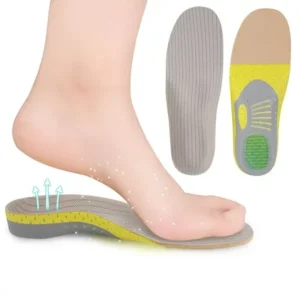
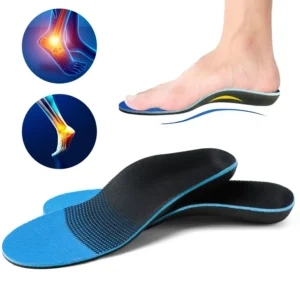
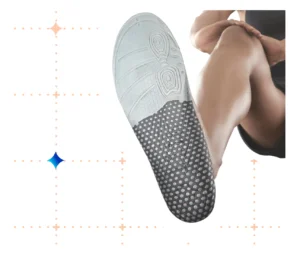
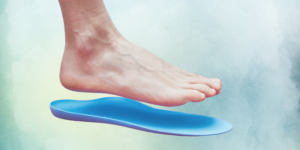



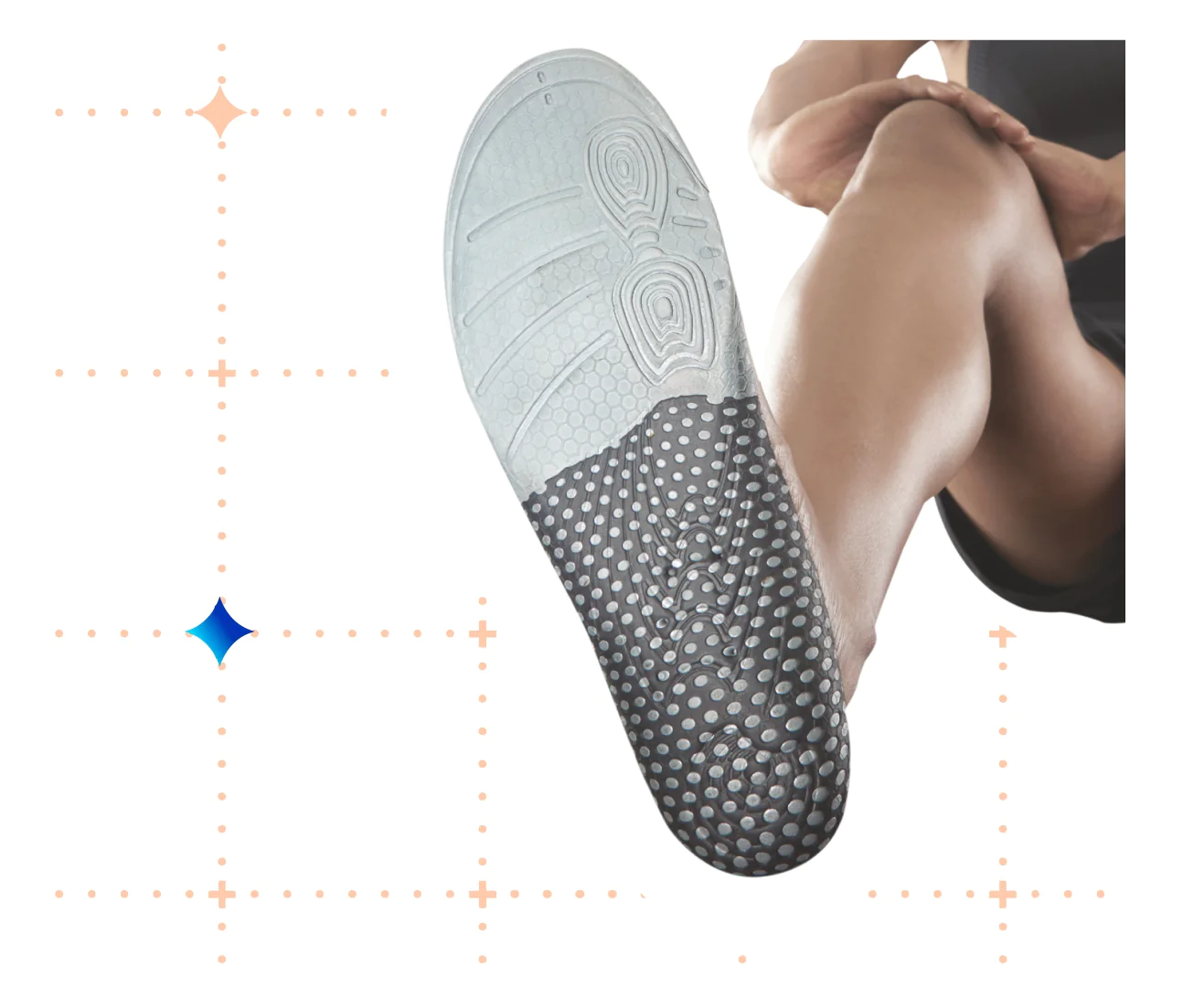
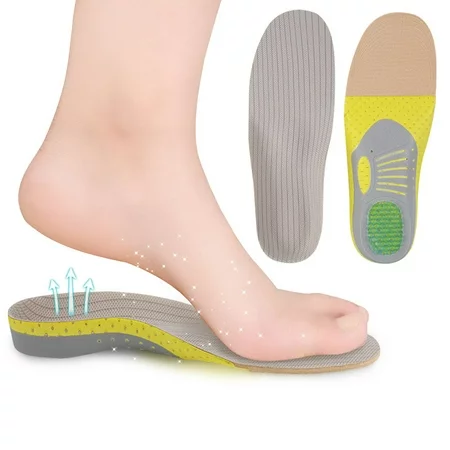
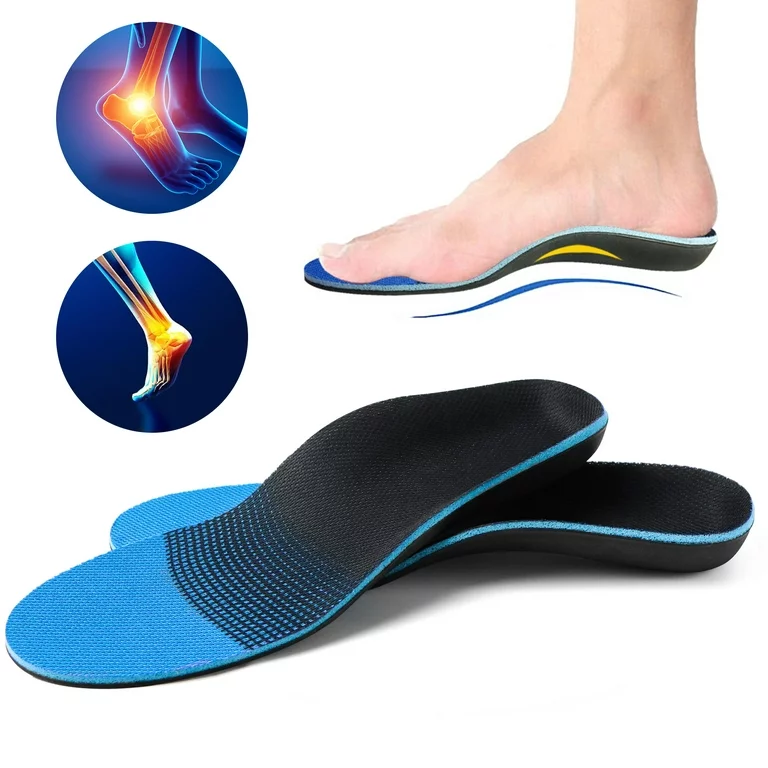
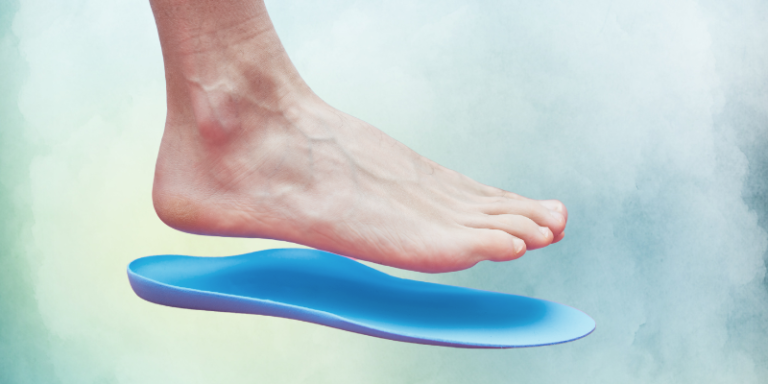


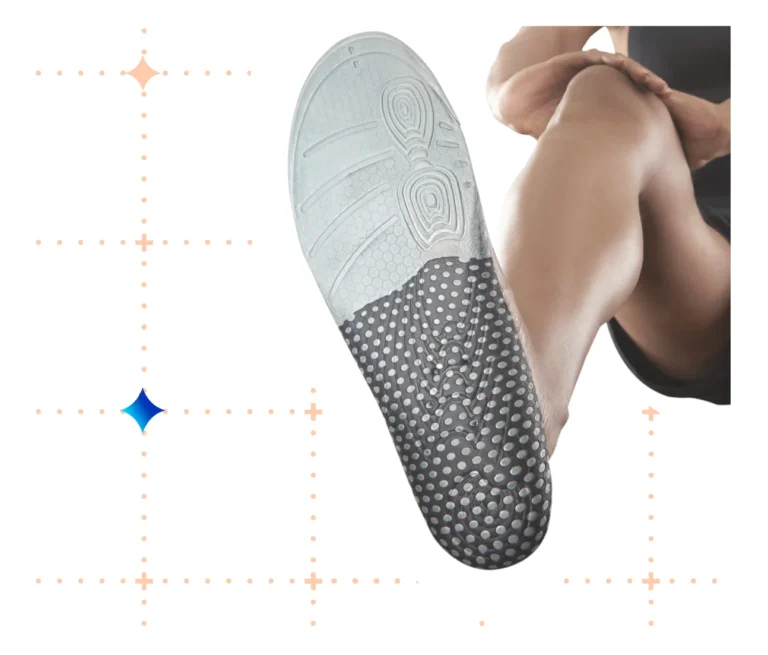
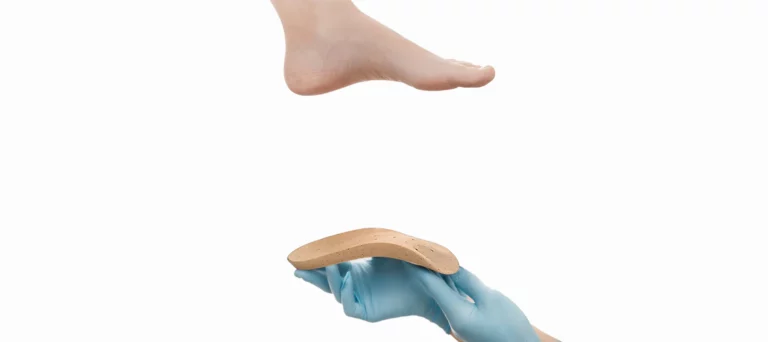
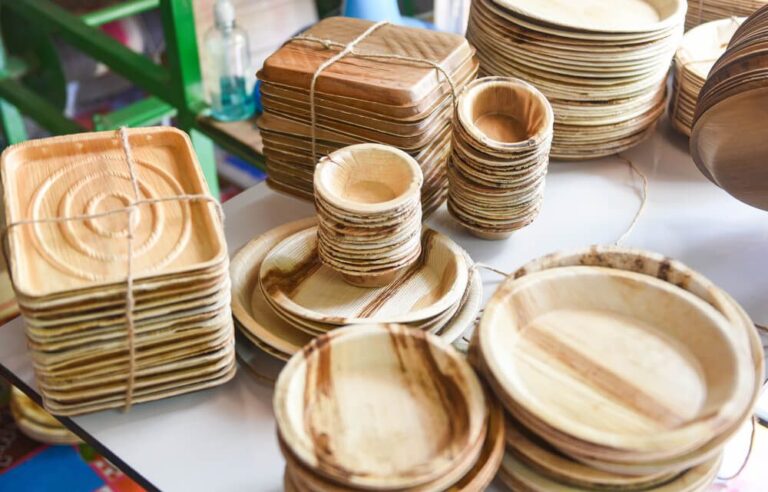
Thanks for sharing. I read many of your blog posts, cool, your blog is very good.